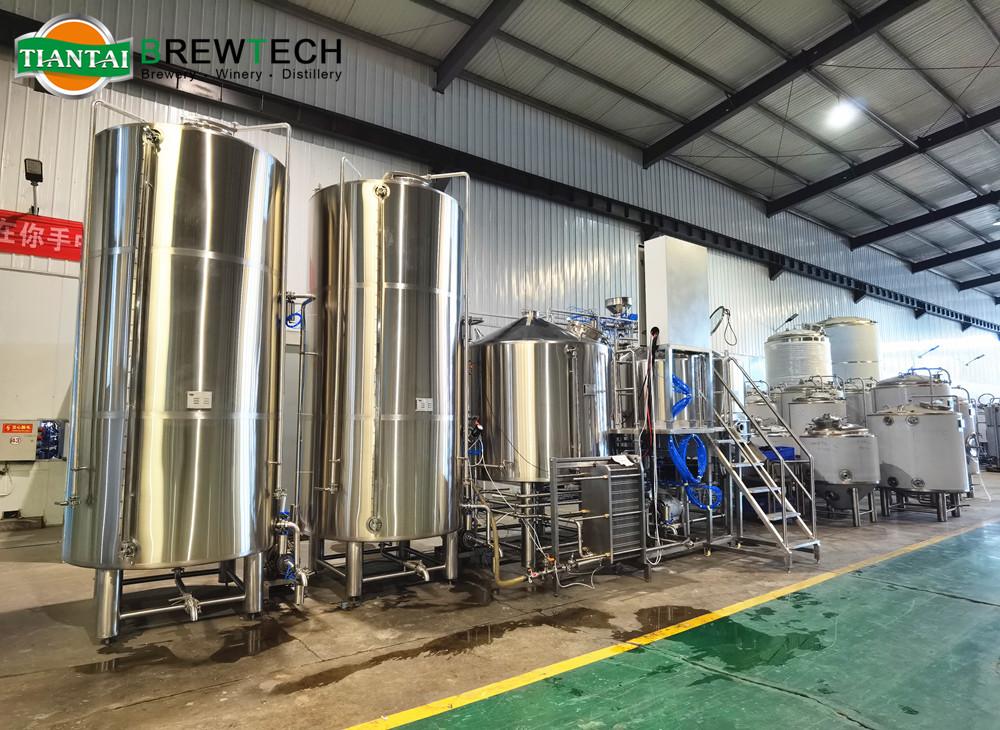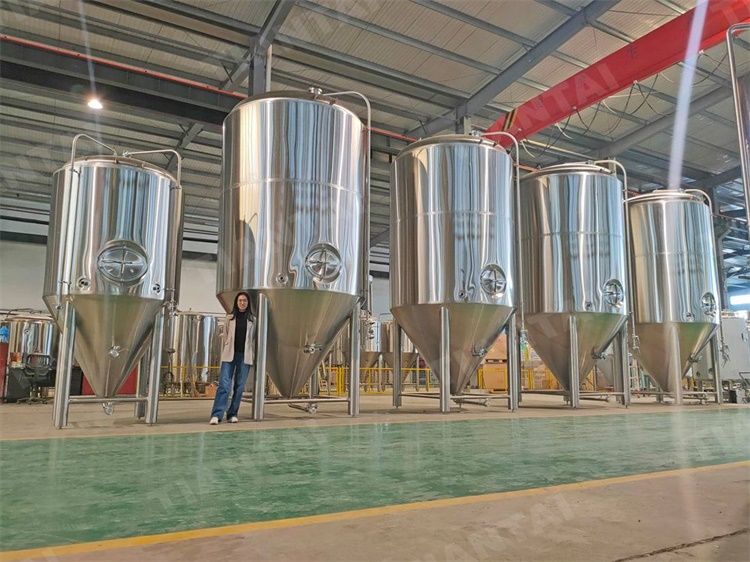
Steam heating kettle tun use steam to heat the wort. Steam transfers heat to the wort by conduction through the heated metal surface of the boiling tun. Tiantai steam kettle boiling tun are made of SUS304 stainless steel, and they use saturated steam for heating.
Jacketed Steam Boiling Tun:
Jacketed steam boiling tuns are more common in small craft breweries and homebrewing setups. With the development of the beer industry, this heating method has been replaced by steam heaters in micro brewery and commercial brewery. However, it serves as the foundation for steam heating boiling tank, and all modern boiling equipment is developed based on this principle. The operation of jacketed steam boiling pots is as follows:
Steam enters the steam pipeline of the boiling tank through a steam inlet valve with a steam pressure reducing valve. The steam pipeline is insulated to reduce heat loss during steam transport. The steam pressure reducing valve reduces high-pressure steam to the pressure specified in the process. While increasing steam pressure can significantly increase the rate of wort heating, excessively high pressure can create a temperature gradient on both sides of the metal surface (steam side and wort side), leading to the formation of burnt substances on the wort side, which affects beer quality. Therefore, it is essential to control the appropriate boiling pressure during beer brewing production. Typically, the steam pressure in the boiling tank is maintained at 0.2 to 0.3 MPa. After pressure reduction, the steam is evenly distributed through multiple small steam pipes into the jacket of the boiling tank. The steam jacket is insulated from the outermost stainless steel layer of the boiling tank to minimize heat loss. According to regulations, the steam jacket, as a pressure vessel, must be equipped with a safety valve and pressure gauge. The upper part of the jacket is welded with 1 to 4 exhaust pipes, and at the start of boiling, the air inside the jacket must be purged with steam. These exhaust pipes converge at a certain position on the upper part and are each connected to an exhaust valve. These exhaust valves must be kept open until steam is emitted to ensure that all air inside the jacket is completely expelled. At the end of wort boiling, these exhaust valves should be opened again to prevent the formation of a vacuum due to steam condensation in the jacket, which could cause the bottom of the pot to collapse. These operations can be automated by Tiantai according to brewer's needs. The wort is heated, while the steam condenses into condensate water in the steam condenser.
Learn more how Tiantai beer equipment company to not only produce the best quality brewery equipment for flavor-rich beers, but also help them to optimize the configuration, maximize process uptime and reduce beer loss when they brewing, PLEASE DON’T HESITATE TO CONTACT WITH US!
Hubert
Email: [email protected]


.jpg)



Get In Touch